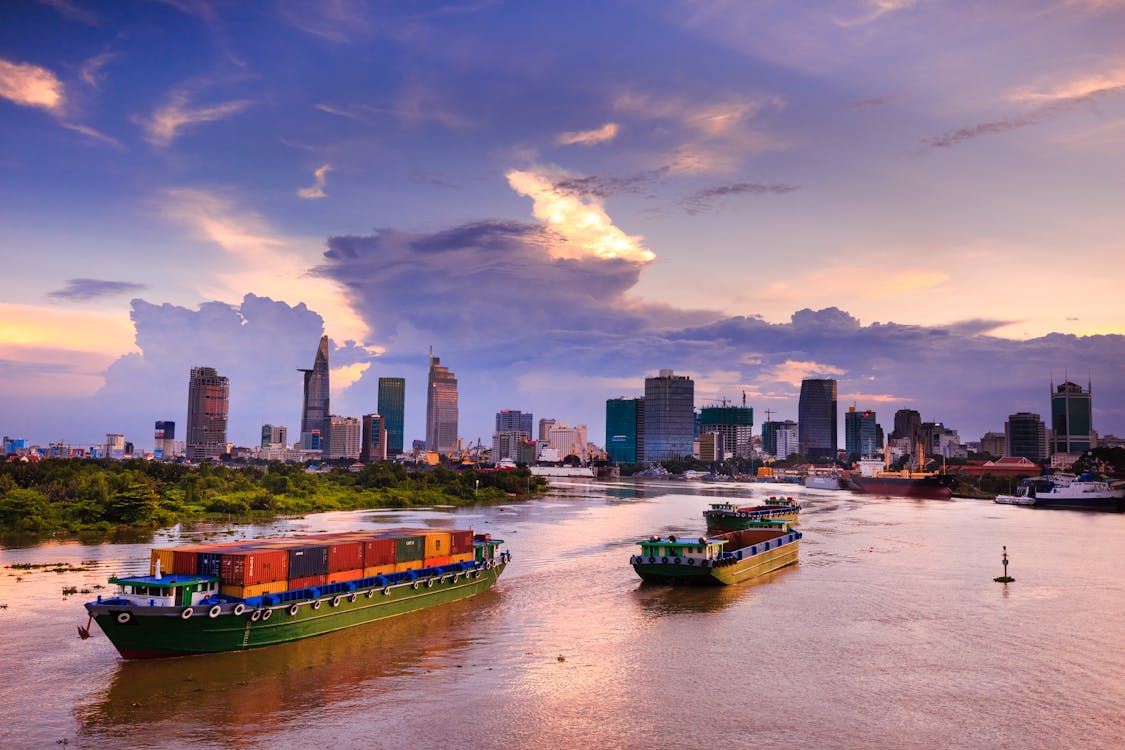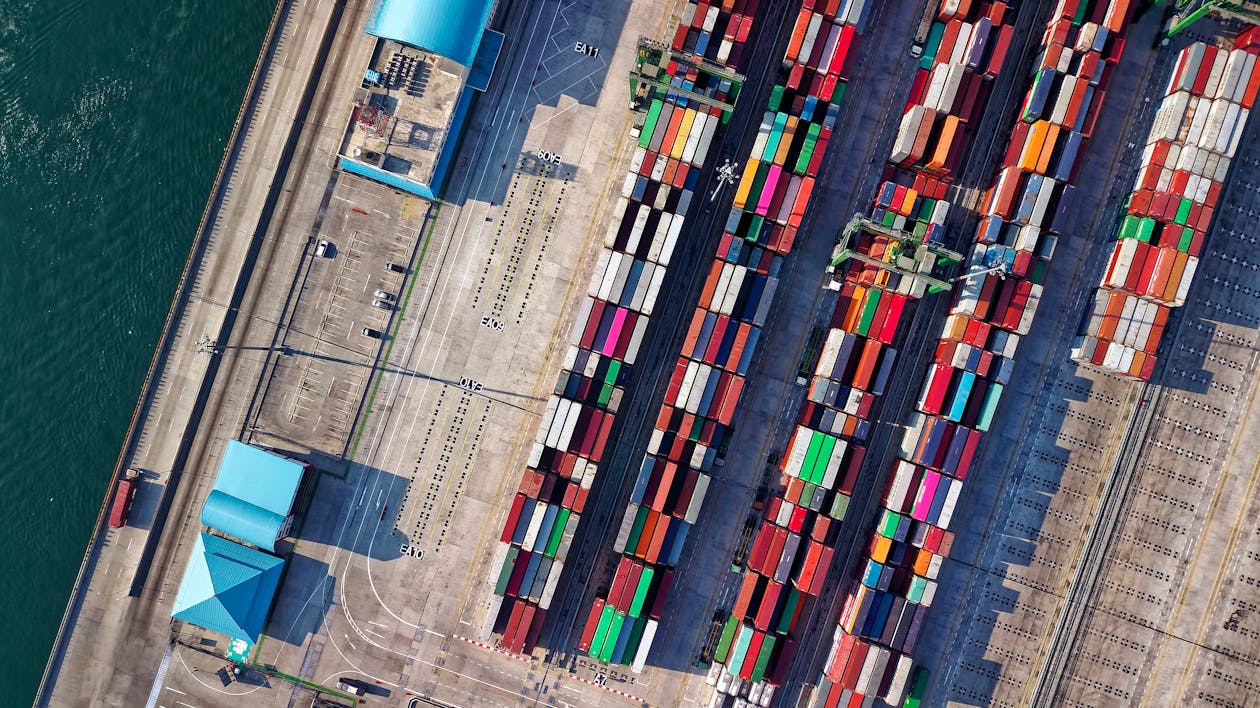Non-Tariff Barriers: The Complete Guide for International Trade in 2025
A comprehensive examination of non-tariff barriers in global trade, including types, impacts, and strategies for businesses to overcome these increasingly significant obstacles.

Non-tariff barriers often create greater economic distortions than traditional tariffs. Photo: TariffGlossary.com
Introduction
In the complex world of international trade, non-tariff barriers have become increasingly significant obstacles for businesses operating across borders. While tariffs once dominated trade policy discussions, today's global commerce is often more heavily influenced by these less obvious, but equally impactful restrictions. Understanding non-tariff barriers is essential for any business engaged in importing or exporting goods, as well as for policymakers and trade specialists who navigate the complex landscape of international commerce.
This comprehensive guide examines what non-tariff barriers are, their various types, real-world examples, and practical strategies for overcoming these challenges in today's interconnected global economy.
What Are Non-Tariff Barriers?
Non-tariff barriers (NTBs) are trade restrictions that are not in the form of traditional tariffs. Unlike tariffs, which are taxes imposed on imported goods, non-tariff barriers include a wide range of regulatory obstacles, administrative procedures, and policy measures that impede international trade flows without applying direct customs duties.
These measures can be implemented for legitimate public policy objectives such as protecting consumer health, ensuring product safety, or safeguarding the environment. However, they can also be deployed as disguised protectionist tools designed to shield domestic industries from foreign competition while maintaining technical compliance with World Trade Organization (WTO) rules.
Types of Non-Tariff Barriers
1. Technical Barriers to Trade (TBT)
Technical barriers include product standards, technical regulations, and conformity assessment procedures that can create obstacles to importers. Examples include:
- Product certification requirements
- Packaging and labeling regulations
- Quality standards
- Technical specifications
- Testing requirements
While these measures often serve legitimate purposes like consumer protection, they can become non-tariff barriers when they are unnecessarily strict, poorly communicated, or disproportionately affect foreign producers.
2. Sanitary and Phytosanitary (SPS) Measures
SPS measures are designed to protect human, animal, and plant health, but can function as significant non-tariff barriers when applied inequitably or without scientific justification:
- Food safety regulations
- Animal and plant health requirements
- Agricultural inspection procedures
- Maximum residue limits for pesticides
- Restrictions on genetically modified organisms
3. Quantitative Restrictions
These direct limits on the quantity of goods that can be imported include:
- Import quotas
- Import licensing requirements
- Export restraints
- Domestic content requirements
- Import bans on specific products
4. Administrative and Procedural Barriers
These non-tariff barriers involve bureaucratic procedures that complicate trade:
- Excessive documentation requirements
- Customs delays and inefficient procedures
- Arbitrary or inconsistent customs valuation
- Complex rules of origin
- Advanced notification requirements
- Discriminatory government procurement practices
5. Subsidies and State Aid
Government financial support to domestic industries can create significant non-tariff barriers by artificially enhancing the competitiveness of local businesses:
- Production subsidies
- Export subsidies
- Tax incentives
- Preferential loans and credit guarantees
- State-owned enterprises with special privileges
Impact of Non-Tariff Barriers on International Trade
Non-tariff barriers have profound effects on global commerce in several ways:
Economic Costs
Research shows that non-tariff barriers often create greater economic distortions than tariffs. The OECD estimates that these measures increase trade costs by 10-15% on average, with significant variation across sectors and countries. For developing economies, the impact can be particularly severe, sometimes effectively blocking market access entirely.
"The interconnected nature of global supply chains means these non-tariff barriers can have ripple effects throughout the economy. Companies will need to decide whether to absorb costs, pass them on to consumers, or restructure their supply chains—all of which have significant implications."
— OECD Trade Policy Paper, 2024Market Access Challenges
For businesses, especially small and medium enterprises (SMEs), navigating complex non-tariff barriers requires significant resources and expertise. The cost of compliance with different technical regulations, certification requirements, and administrative procedures can make entering new markets prohibitively expensive.
Supply Chain Disruption
In today's interconnected global economy, non-tariff barriers can disrupt complex supply chains that span multiple countries. When components or raw materials face unexpected restrictions, entire production networks can be affected, leading to delays, increased costs, and reduced efficiency.
Innovation Impact
Divergent standards and technical regulations across markets can impede innovation by forcing companies to develop market-specific variants of products rather than focusing on breakthrough technologies. This effect of non-tariff barriers is particularly evident in highly regulated sectors like pharmaceuticals, medical devices, and emerging technologies.
Real-World Examples of Non-Tariff Barriers
Case Study 1: Agricultural Products
The European Union's strict regulations on genetically modified organisms (GMOs) serve as significant non-tariff barriers to agricultural exports from countries like the United States, where GMO crops are widely grown. While the EU defends these measures as necessary for consumer protection, critics argue they function as de facto trade barriers with questionable scientific basis.
Case Study 2: Automotive Industry
China's cybersecurity requirements for automotive electronics and connected vehicles have created non-tariff barriers that foreign car manufacturers must navigate. These regulations mandate extensive data localization and government access to certain vehicle data, imposing additional compliance costs on non-Chinese manufacturers.
Case Study 3: Digital Services
Data localization requirements, internet filtering, and restrictive licensing for service providers function as digital non-tariff barriers in many countries. For example, requirements that companies store data on servers physically located within a country's borders effectively restrict cross-border digital trade.
Key Facts: Non-Tariff Barriers
- NTBs increase trade costs by 10-15% on average (OECD)
- The WTO's TBT Agreement covers over 24,000 technical regulations globally
- SMEs bear disproportionately higher compliance costs relative to larger corporations
- Digital trade restrictions have increased 60% since 2018
Strategies for Navigating Non-Tariff Barriers
1. Conduct Thorough Market Research
Before entering a new market, businesses should identify potential non-tariff barriers through:
- Regulatory assessment of target markets
- Consultation with trade associations and export promotion agencies
- Review of trade complaints and disputes in the sector
- Analysis of competitors' market entry strategies
2. Build Regulatory Compliance Capacity
Developing internal expertise to navigate non-tariff barriers is essential:
- Establish dedicated compliance teams
- Create detailed compliance manuals for each market
- Implement tracking systems for regulatory changes
- Budget appropriately for compliance costs
- Consider obtaining international certifications recognized across multiple markets
3. Engage with Policymakers
Proactive engagement can help address non-tariff barriers:
- Participate in public consultations on new regulations
- Join industry associations that advocate for trade facilitation
- Engage with relevant government agencies through formal channels
- Utilize bilateral business councils and trade forums
4. Leverage Trade Agreements and International Organizations
Existing mechanisms can help address non-tariff barriers:
- Utilize provisions in free trade agreements
- Engage with national trade remedy authorities
- Consider WTO notification and dispute settlement processes
- Participate in international standards development organizations
5. Adapt Business Models
Sometimes the most effective approach to non-tariff barriers is adaptation:
- Consider local manufacturing or assembly to bypass import restrictions
- Form strategic partnerships with local companies
- Adjust product specifications to meet local requirements
- Develop market-specific variants when necessary
Recent Trends in Non-Tariff Barriers
Several important developments are shaping the landscape of non-tariff barriers in 2025:
Increased Focus on Environmental Standards
Environmental considerations are driving new potential non-tariff barriers, including carbon border adjustment mechanisms, sustainability certification requirements, and regulations on plastic packaging. While serving important climate goals, these measures can create significant compliance challenges for exporters.
Digital Trade Restrictions
As digital trade grows, so do digital non-tariff barriers. Data localization requirements, restrictions on cross-border data flows, discriminatory digital taxes, and content filtering are increasingly affecting service providers and e-commerce businesses.
National Security Concerns
The integration of national security considerations into trade policy has accelerated the implementation of non-tariff barriers related to critical technologies, infrastructure, and supply chains. Investment screening, technology transfer restrictions, and domestic procurement preferences have all expanded under security justifications.
Pandemic-Related Measures
The COVID-19 pandemic normalized emergency trade measures, some of which have evolved into persistent non-tariff barriers. Export restrictions on essential goods, enhanced health-related border measures, and requirements for domestic manufacturing capacity in critical sectors continue to affect trade flows.
The Future of Non-Tariff Barriers
As traditional tariffs continue to decline through multilateral and bilateral trade agreements, non-tariff barriers will likely remain the primary challenge in international trade. Several trends will shape their future development:
- Greater transparency through digital tracking and notification systems
- Increased emphasis on regulatory cooperation in trade agreements
- Growing role for international standards as harmonizing tools
- Potential new frameworks for addressing digital trade barriers
- Continued tension between legitimate regulatory objectives and protectionism
Conclusion
Non-tariff barriers represent complex challenges in today's global trading system. While they often serve legitimate public policy objectives, their design and implementation can significantly impact international trade flows and market access. For businesses engaged in cross-border trade, understanding and strategically addressing these barriers is essential for success in global markets.
As the nature of these barriers continues to evolve, staying informed, engaging with policy processes, and developing robust compliance capabilities will remain crucial strategies for navigating the complex landscape of non-tariff barriers in international trade.
For more information on specific types of trade barriers, explore our detailed glossary entry on non-tariff barriers or check our NTB Navigator tool that's coming soon to help identify potential obstacles for your specific products and target markets.
Related Articles

Trade Wars Reignited: Understanding Global Tariff Escalation

USMCA Mandatory Review Process Begins
Stay Updated on International Trade Barriers
Get the latest news and analysis on non-tariff barriers, trade policies, and global market access challenges delivered directly to your inbox.
Subscribe to Our Newsletter